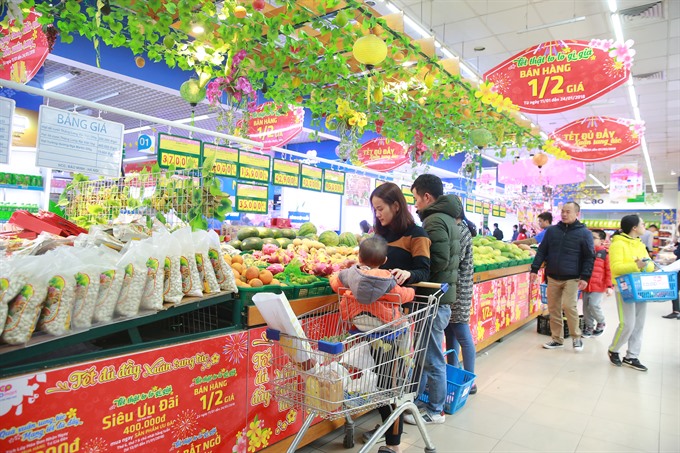Viet Nam can keep inflation below 4 per cent in 2019 despite an unpredictable world economy, experts told a seminar on market developments and prices held in Ha Noi on Thursday.

Viet Nam can keep inflation below 4 per cent in 2019 despite an unpredictable world economy, according to experts.
The economists were speaking at a seminar on market developments and prices held in Ha Noi on Thursday.
The workshop aimed to analyse the market in 2018 to provide a scientific basis for forecasting and proposing inflation control solutions, restructuring and promoting economic growth in 2019 and beyond.
According to economist Nguyen Duc Do from the Institute of Finance, the control of inflation this year will be based on a sharp drop in oil prices in the past two months, from more than US$70 per barrel to less than $50. With oil prices plummeting, inflation in December, 2018 was only 2.98 per cent, down from 3.98 per cent in October, 2018.
“This is a very favourable condition to ensure curbing inflation below 4 per cent in 2019. The inflation rate in the first month of this year is likely to be below 3 per cent after the ministries of Industry and Trade, and the Finance decided to reduce petrol and oil prices by about VND500 per litre,” Do said.
Low inflation in the first month of 2019 will have a positive impact on inflation for the whole year, as well as the average inflation rate of the whole year, he added.
According to Do, in addition to the fall in oil prices, there are many other factors that help curb inflation, including expected stable pork prices, less pressure on the exchange rate because the US economy’s growth is predicted to slow, and demand for the US dollar is unlikely to increase greatly with the Federal Reserve rate hike schedule in the final stage.
Another positive factor is that US-China tensions look to be subsiding, said Do.
On the other hand, Dr Le Quoc Phuong from the Ministry of Industry and Trade’s Industry and Trade Information Centre said the world commodity price this year was forecast to increase and the Fed plans to raise interest rates at least twice in 2019. From that, the value of dollar would increase, putting pressure on the exchange rate and inflation.
In terms of domestic factors, the GDP growth target is relatively high, while the growth model has not been renewed, which could pressure inflation. Besides, some localities will continue to raise prices of health services and education and taxes on petrol and oil prices, which could all increase inflation.
However, Phuong said Viet Nam had many advantages to curb inflation. The CPI in recent years has been lower than 4 per cent. The supply of goods was relatively abundant and the macroeconomic conditions were stable.
“With favourable factors, if we implement solutions well, it is possible to achieve inflation control target below 4 per cent this year,” Phuong said.
According to the General Statistics Office, GDP in 2018 grew 7.08 per cent, the highest growth rate for the past 11 years.
The average CPI in 2018 increased 3.45 per cent compared to the average level in 2017, lower than the target set by the National Assembly of about 4 per cent. — VNS





